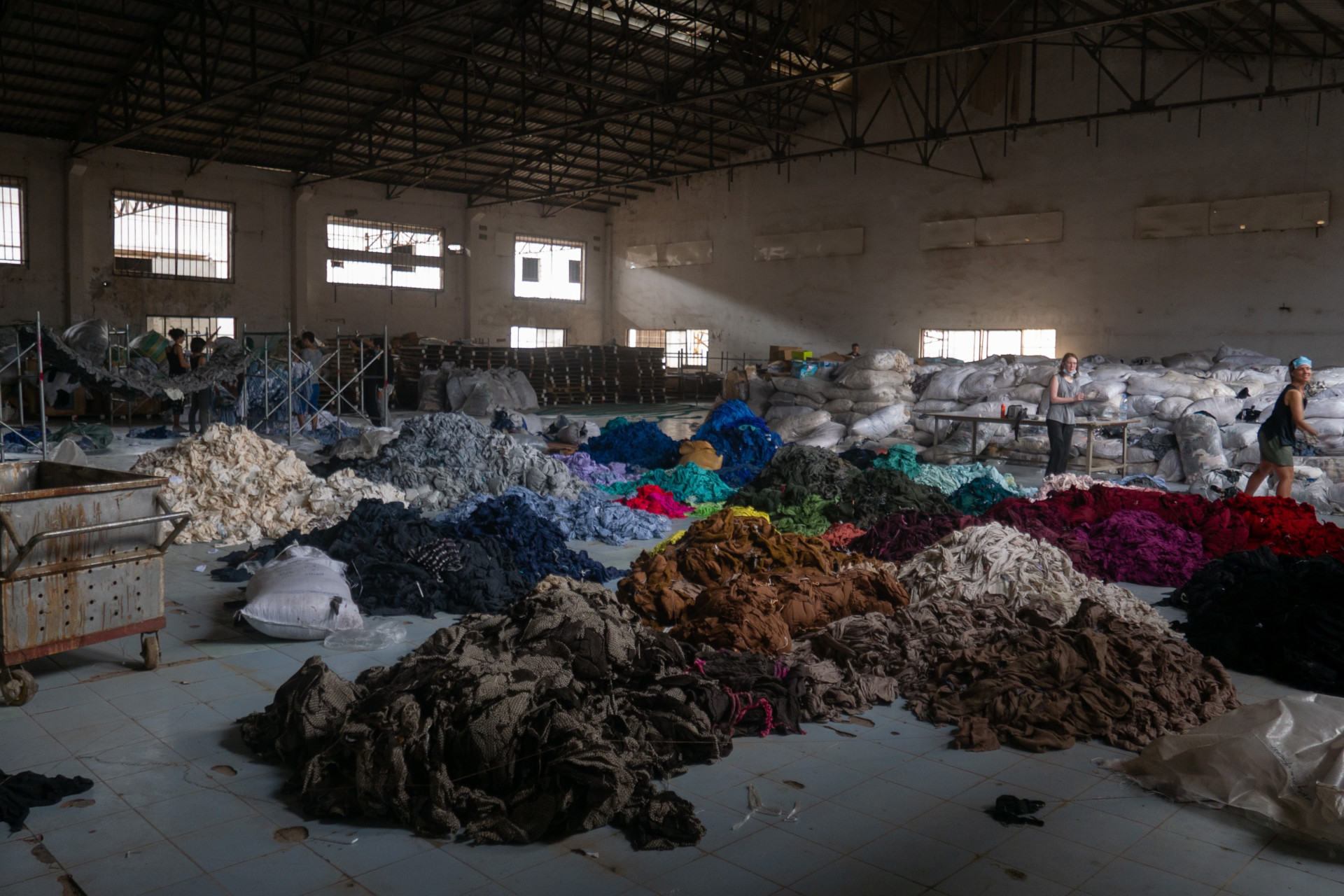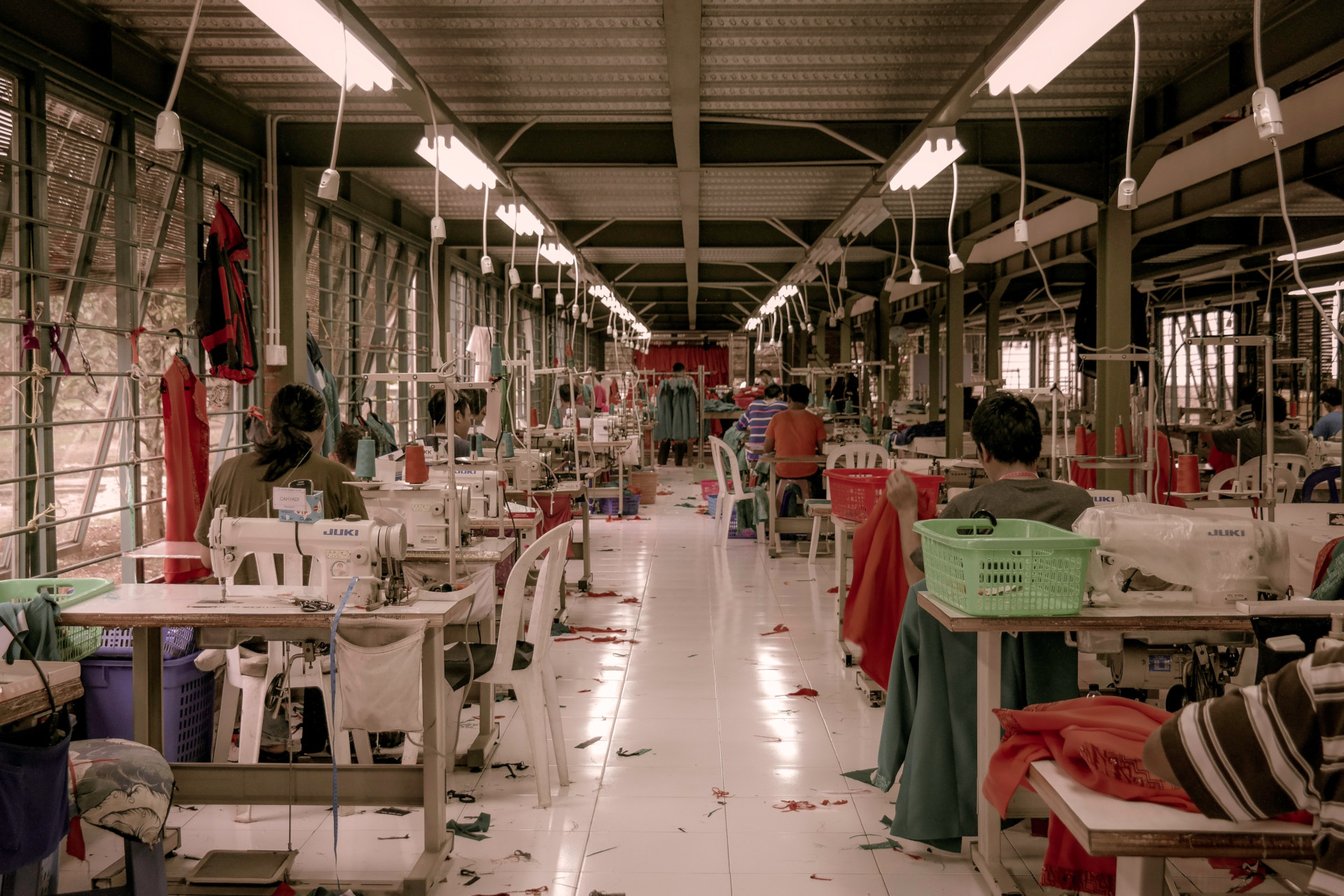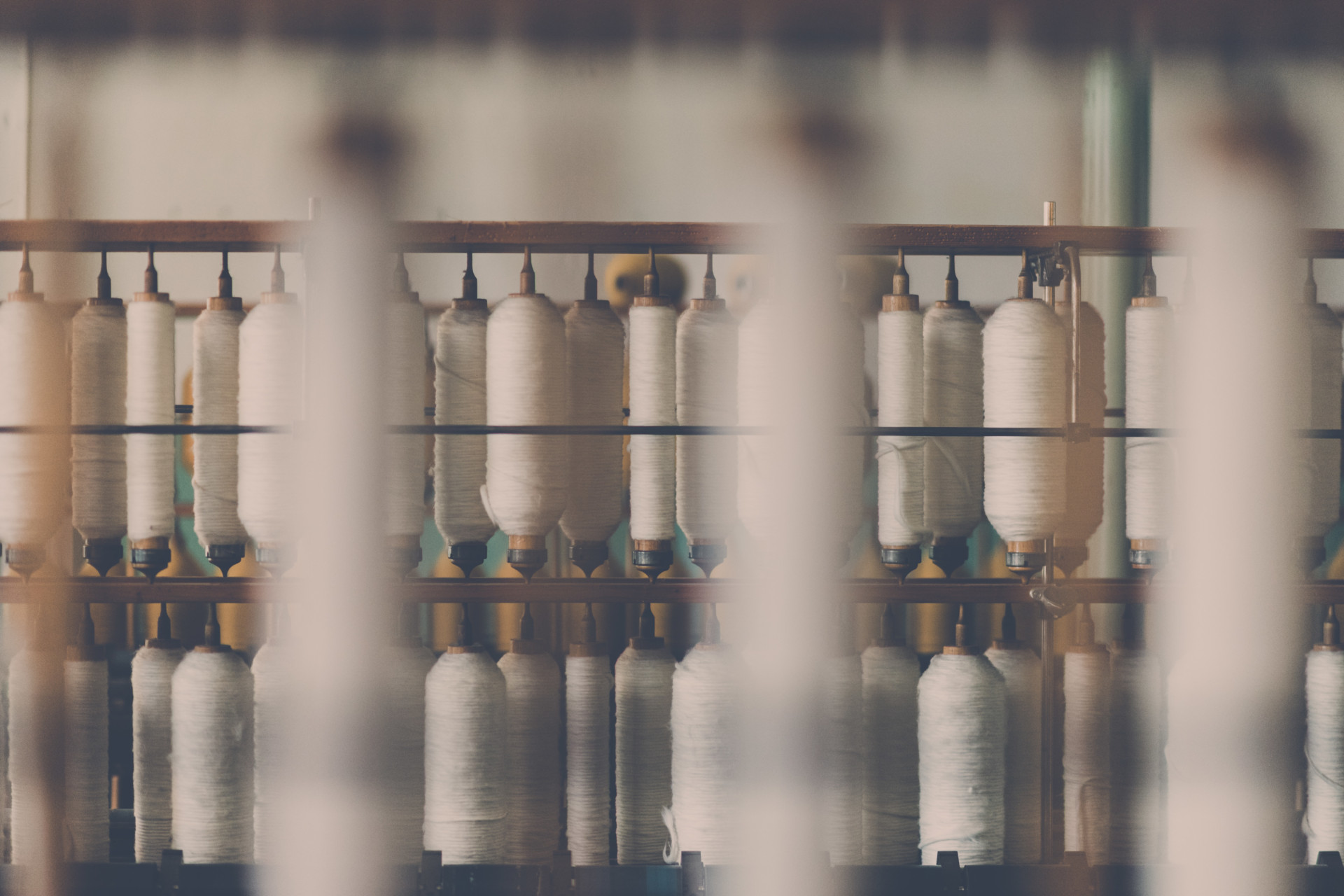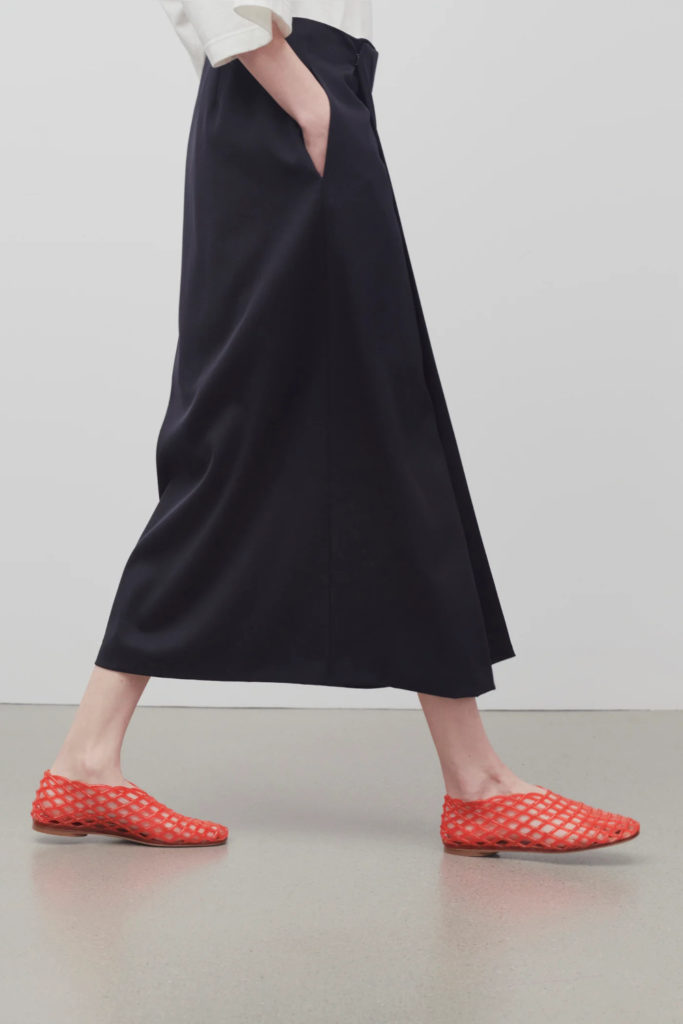What is Fast Fashion?
By
3 years ago
We demystify one of the industry's biggest buzzwords

While a term we’re all familiar with, fast fashion is a topic that is both broad and complex. Lurking online, on the high street and even on some of the world’s most famous runways, fast fashion is seemingly everywhere and vastly contributing to the 92 million tonnes of waste produced by the fashion industry each year. To cut through some of the nitty gritty surrounding the topic, we spoke to Rebecca Ryder-Caddy, a Senior Lecturer in Fashion & Product Development at Coventry University.
What is Fast Fashion?
‘There are a lot of different definitions of fast fashion which reference different key words (cheap or low value, low quality, trends, fads, high street, unethical practices),’ says Rebecca. ‘What is key in defining fast fashion is that it centers around mass production and rapid turnover. As a result of this, fast fashion often references short term trends (currently these are largely based on celebrities, social media and reality TV as these are the sources of imagery which can shift aesthetic trends rapidly).
‘This shows a real shift from the traditional fashion model where catwalk sets the trends six months to a year ahead of them being commercially present, or the more avantgarde or anti-fashion movements which reference cultural and social shifts and look deeper than aesthetic styles. Instead, fast fashion is much more about clothing which is readily available and fits the immediate needs of the market.
‘Fast fashion is considered a recent phenomenon, but its origins reach into fashion history; as fashion became more democratic during the twentieth century with bolder styles being available at more market levels and price points, production and consumption increased. We’ve seen this trend escalate further in recent years with research indicating that fashion brands are now producing almost twice the amount of clothing today compared with before the year 2000.’

(c) Francois Le Nguyen, Unsplash
Due to the complexities of the topic, there’s also a boatload of misconceptions surrounding fast fashion. As Rebecca outlines below:
- The Success of Fast Fashion is the Responsibility of the Consumer – ‘This grossly oversimplifies the picture. Granted, if people didn’t buy these fast fashion garments, there wouldn’t be a reason for their manufacture; but there is a whole world of reasons why the story is much bigger, and more complicated than that – not least that brands employ expert marketeers to encourage buyer behaviour in both retail and e-tail environments.’
- Fast Fashion is All About Social Media Selfies – ‘It is true that the boom in e-commerce in the fast fashion area could be largely attributed with the influence of social media trends, however there has long been a need for low budget clothing which doesn’t depend on TikTok influencers. Many consumers need affordable garments for specific purposes (uniforms or dress codes, for example) and more considered or ethical pieces just aren’t an option for them.’
- Fast Fashion Purchases are Impulsive & Frivolous – ‘In times of turmoil and upheaval (for example in recession, or during a pandemic) it is quite normal for people to seek comfort and pleasure to make themselves feel better.’
- Brands Don’t Care – ‘While there are a number of fast fashion brands whose unethical practices have become the stuff of design school legend, many are working hard to improve the situation. It has long been standard practice for brands to visit the factories of their suppliers to check for safe and ethical working practice (even before the Rana Plaza tragedy in 2013). The increase in social media attention and ecommerce traffic in recent years means that brands have to be more transparent and are more accountable for their actions and inactions. This doesn’t mean that all brands are doing it right, but it does mean that there is more attention on them when they don’t.’
How does it differ from slow fashion?
As the name implies, fast fashion is all about having a quick turnaround to keep up with trends. ‘Because fast fashion is about piling high and selling fast, it largely depends on short term trends or fads. To keep the target customer interested, you have to offer them what they want or need now. This means that the brands work to seasons and these seasons are much shorter than the traditional fashion calendar would suggest. For example, if a brand has two new collections each week then in reality they have 104 seasons per year. This would be untenable for smaller, younger or more exclusive labels, but when the quantities are as high as we see from the likes of Shein or Zara who sell globally, this is doable.’

(c) Rio Lecatompessy, Unsplash
In contrast, slow fashion is about keeping key styles in the spotlight for a longer period of time. ‘Instead of responding to short term trends, slow fashion designs are usually trans-seasonal (suitable for multiple seasons) or pan-seasonal (always wearable). The inspirations for these designs come from broader sources and often reflects a type of customer or lifestyle and socio-economic movements happening at local and global levels. Garments from the slow fashion movement are often considered classic in their design as they can be worn year after year.
‘As slow fashion brands often aim at a more niche target customer, they produce a lower number of items (this can also be a conscious decision with many slow fashion brands making items to order to avoid excess production and any increase in pre-consumer waste). By its nature, this makes these pieces more exclusive as they’re not so accessible and therefore makes the brand (sometimes accidentally) part of the luxury market.’
What are the pros and cons of fast fashion?
Like most issues pertaining to sustainability, those surrounding fast fashion are broad and complex. As Rebecca highlights: ‘It’s difficult to unpack fast fashion without leaning into labour laws, regional and local politics, corporate responsibility, design education (or miseducation), supply chain transparency, environmental impact or local economics, capitalism, consumer psychology and many more areas. It is therefore essential to acknowledge that fast fashion is not a stand alone topic and the problems associated with it are not easy to solve.’
Artisanal Techniques
Pro: ‘It raises the profile of local and traditional skills and techniques. For example, if H&M add a woven trim to a range of handbags which is only produced by a particular group of regional artisans, then (with the right attribution and recognition) they could be raising the profile of that tradition. Additionally, this generates further income for these practitioners.’
Con: ‘The caveat here is that the brand would have to recognise the inspiration and origin of the detail, promoting the locality directly in their campaigns with transparency; additionally, this depends on the artisans in question being paid fairly for their contributions which is hard to verify in complex and extended supply chains like we often see in fast fashion.’

(c) Reyazul Haque, Unsplash
Employment
Pro: ‘It generates employment and boosts local economies. If a factory secures a contract with a large international brand to produce a range of pieces, then they are able to employ more local workers and to boost the local economy. Additionally, by ensuring the workforce can meet the quality expectations of the brands, training would be provided ensuring the local workforce are gaining valuable transferrable skills.’
Con: ‘It is very difficult for a consumer to be able to trace the supply chain of a product back to the individual makers and therefore to know if they are receiving fair pay for their work. Brands often undertake factory visits to assess worker conditions on site, however as these are often planned in advance for logistic reasons there is potential for a factory to stage the conditions during the visit. Also, as many of the factories are subcontracted from suppliers, even the brands themselves would struggle to evaluate if the staff are receiving a fair wage for their work.’
Equality
Pro: ‘Associated with the above point, fast fashion is a predominantly female industry. Non-profit organisation Remake notes that 80 per cent of fast fashion products are made by women who are only 18 to 24 years old. As much of the fast fashion production takes place in economically developing regions, this can empower women within the communities and offer them financial independence and a means to support themselves.’
Con: ‘As the majority of employees in the supply chain are female and production often takes place in locations which are economically imbalanced for men and women there is a significant chance that the female employees are not being paid a fair wage for their skilled work. Furthermore, the female workforce are often trapped in this cycle of long hours and low pay which can leave them with little choice or alternatives.’

(c) Janko Ferlic, Unsplash
Materials
Pro: ‘Fast fashion often utilizes synthetic fibres as it is easy to print and relatively cheap to produce. This reduces the environmental impact of garments if comparing them to cotton as they don’t require farming, harvesting or the vast quantities of water needed to grow and process the fibres. Additionally, as the fabric is often completely synthetic it is easier to recycle than a fabric which includes blended fibres (polyester cotton blend for example) and means that the garments can feed into a circular economy which is more environmentally ethical than garments with a linear lifecycle which are harder to recycle and therefore often end their journey in landfill.’
Con: ‘It’s not as black and white as the above implies, relatively few garments are recycled or repurposed at the end of their life. The BBC suggests that approximately 85 per cent of all textiles thrown away in the US – roughly 13 million tonnes in 2017 – are either dumped into landfill or burned. In principal a huge quantity of fast fashion products could be recycled or upcycled, in reality very few are.’
What impact has fast fashion had on us?
‘It is hard to overestimate the impact of fast fashion on consumers, the planet or event on our culture. The democratizing effect has meant that most people with most budgets can access bold and expressive design at their leisure, which is a real positive for individual consumers. But with this has come a pressure that many consumers feel to always have the newest, most recent and next season styles. Again, this links so closely with social media’s impact on us as users, and the need to not be photographed in the same outfit multiple times has fed into the demand for these products.
‘Aside from these points, the rise and rise of fast fashion has led to more demand for clarity and transparency with brands needing to improve their communication but more importantly, their practice and in many cases their own awareness of what was happening within their supply chains.
‘Environmentally, the increase in garment production has had an effect not dissimilar to the industrial revolution of the 18th century with huge carbon emissions, air and water pollution in both manufacturing regions and locations where waste textiles and garments are burnt and destroyed.’
What can we do?
‘What’s important is that as consumers we make our choices consciously. It may not be possible to purchase only slow fashion products from local, ethical designers; but perhaps our next fast fashion purchase is one we intend to wear multiple times, to look after and to give a second life when we’ve finished wearing it. These are steps in the right direction and more importantly they are achievable for all of us.’
Key Resources:
- The UN Sustainable Development Goals are a key influencer in how brands are adjusting their practices and are worth exploring further.
- Another resource to explore is the Ellen Macarthur Foundation which has excellent resources on moving towards a circular economy in many sectors including fashion.
- The Higg Index, which is a prominent self-reporting tool which brands can use to evaluate and share how ethical their production is, has been a really positive addition to the industry; but it’s not without fault. While self-reporting is intended to build trust between consumer and brand it does leave room for dishonesty, and misleading results as a recent Guardian article highlighted.
Featured image: Fernand De Canne, Unsplash
DISCOVER MORE
What is Pre-Loved Fashion? / What is Vegan Fashion?



